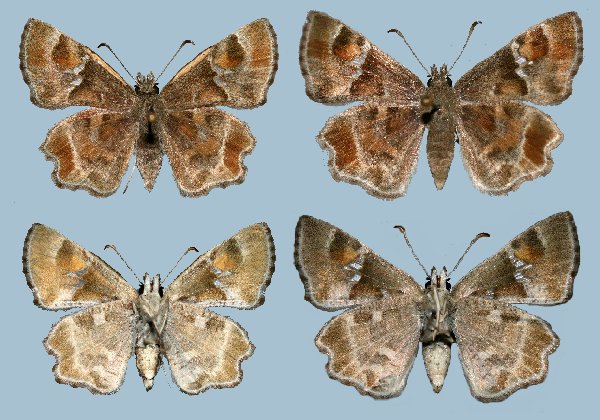Systasea zampa

Photo Life History: Systasea zampa
Habitat: Lower Sonoran Desert
Host Plants: Abutilon abutiloides; Alcea rosea; Abutilon mollicomum; Abutilon palmeri (Larvae can be found on many species of Abutilon.)
Suitable Lab Host Plants: Malva neglecta; Sida hederacea
How to Find Female Butterflies: Click here.
How to Care for Live Female Butterflies: Click here.
Methods of Female Oviposition:
How to Find Eggs: Look on host plants with new growth.
How to Hatch Eggs: Consolidate eggs into one container
How to Find Caterpillars in the Field: Look for Skipper Nests. Arizona powdered skippers make conspicuous nests on the velvetleaf. Click here for example.
How to Find Pupae in the Field: Look for Skipper Nests. Like many spread-wing skippers, Arizona powdered skippers will pupate in their nests.
Caterpillar setups: Open terrariums; Open Bucket;
Larva to Pupa: Unknown. Larva Changes Color from light green to whitish prior to hibernating. Larvae going through will just pupate.
Number of Broods per Year: 2-4; depending upon location and season.
Overwintering Stage: Mature Fifth Instar Larva
Overwintering Strategies: Your Own Backyard; Refrigerator (Note: This might not be necessary. Mist spraying hibernating larvae may trigger them to break diapause and pupate.)
Post-Hibernation Strategies: Expose mature last instar larvae to warmer temperatures, long-day photoperiod, and humidity. They should pupate within 14 days of being exposed to these conditions.
Avoiding Diapause Techniques: Healthy host plant. If you feed SE Arizona populations with fresh host plant, larvae will pupate instead of diapausing.
Disease Prevention: Change out host plant and remove frass every four or five days.
Emergence: Emergence Container
Field Notes: Even though Arizona powdered skippers fly in a unique habitat of the lower sonoran desert, larvae can be reared on common mallows such as holly hock or cheese weed. Globe mallows may very well work as well even though this hasn't been proven.

